Hacker
Professional
- Messages
- 1,044
- Reaction score
- 834
- Points
- 113
Unfortunately, if you are in business, at least somewhat famous, or you work with a trade secret, you are in a potential risk zone. It is worth mentioning the curious but unpleasant stories about hidden cameras in Airbnb rented apartments or in public showers, changing rooms, toilets. A hidden camera that monitors the keyboard of an ATM (or any other place where a password is entered on the keyboard) can also make life easier for intruders.
So first of all, figure out who, why and how can act against you. Perhaps, in some attack scenarios, the use of gadgets will indeed be practical. For example, if someone wants to keep track of your movements, then they have different ways at their disposal - to hire private detectives or to get access to the data of providers and cellular operators. But using a GPS tracker can be cheaper, easier, and more convenient.
Choice problems
If suddenly, after reading this article, you wanted to feel like a super spy, then regardless of whether you have bad intentions, or you just want to have fun, we really do not recommend it. In the Russian Federation, there are laws that prohibit the sale and purchase of devices designed to secretly collect information. The wording in the law is vague, and the practice of law enforcement includes such dubious stories that the Supreme Court even issued a special clarification on how to prevent abuse of the law.
After that, determine in which zone the information security violation will be really critical in order to focus on protecting it and not waste too much effort and resources. It is impossible and unnecessary to protect everything from everything; instead, it is worth protecting what is really important. A boardroom meeting room or an area where a mission-critical project is being worked on, for example. Or just a closet where you keep something that shouldn't be seen by people who don't like you.
Don't forget that one of the most important hacker tools is social engineering. So you need to defend yourself against it. If you have already decided on your "protected perimeter", then make sure that the people admitted to it are also competent and interested in maintaining security. Remember that no one pays attention to cleaners and repairmen - it is easier for them to easily install a hidden device. But an absolutely loyal, but careless colleague may simply not notice that someone has put a spy gadget in his bag or pocket.
From theory to practice
Such an introduction before discussing technical issues was necessary, because there is no trick against some scrap, except for foresight.
A modern bug-microphone can be smaller than a flash drive, and if it simply records information while it is in someone's pocket, then it can only be detected with a highly sensitive detector at close range. It can look whatever you want. So you need to protect yourself from it, first of all, by non-technical methods.
Remember that any spy device has strengths and weaknesses. So, the microphone, for all its undetectability, has two very important weaknesses. First, the battery: no matter how good it is, even if the device is activated only when there is sound, and the rest of the time is in sleep mode - sooner or later it will run out.
And here the second weakness will appear: if the device does not have a transmitter, then it will not only have to be placed, but also taken away. And if they manage to find it before that, then all efforts to introduce a bug are in vain, no information will be obtained.

This is how the microphone of a more or less serious bug may look like, and its more modest friend from Aliexpress, most likely, will just look like a USB flash drive.
The situation is similar with video cameras. They, too, can be very compact and well camouflaged - down to a camera in a water bottle. But they have more weaknesses than microphones - battery life is shorter and a lens is always present. It can be very small, but it will still be at least a little, but glare if light hits it.
There are special detector devices that detect suspicious glare, but you can try to look for the camera using a regular flashlight. The less the rest of the light, the better - the glare will be more noticeable.
INFO:
Speaking about special devices-detectors, let us mention the important problem of the market for devices for secretly obtaining information and exposing them. When you become interested in them, you find yourself between two fires: Aliexpress, with its offerings of super cheap and super innovative gadgets, and specialty stores offering devices from manufacturers with decades of experience. Increased sensitivity and generally off scale coolness are usually advertised. But no one guarantees that a device a hundred times more expensive will be a hundred times better.
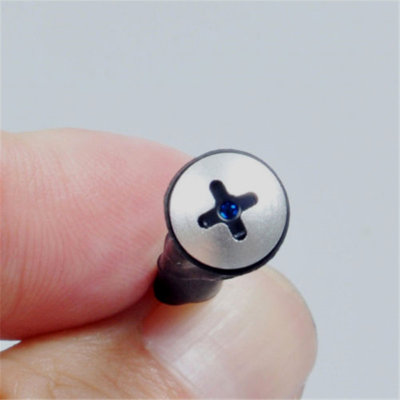
Pinhole camera lens from Aliexpress. Establishing its main part is not an elementary task.
Spotting bugs is a little easier if the operator wants to make his life easier too. Modern technologies have made devices that transmit data in real time quite affordable. But the laws of physics cannot be circumvented: if they transmit something, then you can detect or jam the transmission channel.
The most common transmission channel is the radio band, that is, Wi-Fi or cellular networks. Either the bug uses an already available Wi-Fi (for example, a guest network), or somewhere nearby an access point will be organized for it - pay attention to unfamiliar and powerful signal distribution nearby. If a new Wi-Fi network is suddenly added to your three usual neighbors, it is possible that the villains settled there.
However, with a high probability, the device will transmit data over cellular networks - and here it will be helped by radio signal detectors. But you need to use them wisely. Namely, turn off all devices that use wireless networks so that there are fewer extraneous signals and a greater chance of detecting a hidden spy. Then do a methodical search. It is somewhat naive to expect that you just press the button and the gadget will immediately reveal to you everything hidden.
How to choose a detector
From the powerful range of prices and the abundance of advertising when choosing a detector, eyes can start to run up. Try to carefully watch what you take, and pay attention first of all to the technical characteristics.
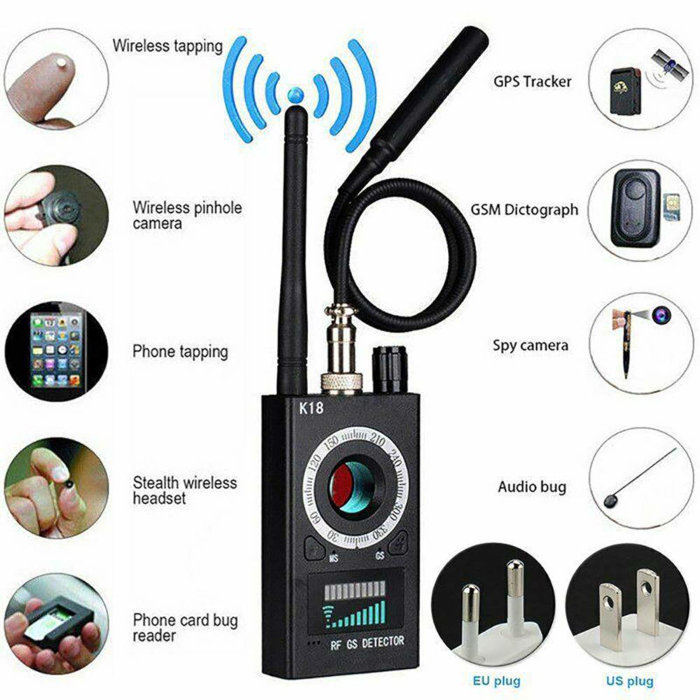
Hackers Tools.
For example, this detector costs $ 90 and promises a frequency range from 1 to 6500 MHz, has a remote antenna and a laser for flashing cameras. For an amateur device, these are good indicators and an acceptable price.
The method of working with the detector does not fundamentally differ from the method of simple inspection. Pay attention to suspicious signs: scratches, strange holes, mysterious objects. Try to put yourself in the shoes of an intruder and check the places where you yourself would hide something. Often, bugs are placed in lighting items or sockets - there, in addition, an uninterrupted power supply to the device can be organized. Of course, if you see any incomprehensible wires - check where they lead.
And it goes without saying - don't let just anyone poke anything into the USB ports of systems that are dear to you. This advice is slightly beyond the scope of this article, because once you get access to USB, you can no longer be limited to surveillance at this level.
Exotic and esoteric
Well, the basic principles are clear - but in case your interest (and paranoia) only flared up from them, here are a couple of interesting devices.
First, there are directional microphones. Strictly speaking, these are not bugs, but they can give a similar effect. A directional microphone can be just acoustic, with a parabolic resonator - such a technologically advanced "ear" is available to anyone, for example, to enjoy the singing of birds without disturbing their approach. Of course, walls protect from it - but if you decide to discuss business plans with colleagues in nature, it is better to remember this device.
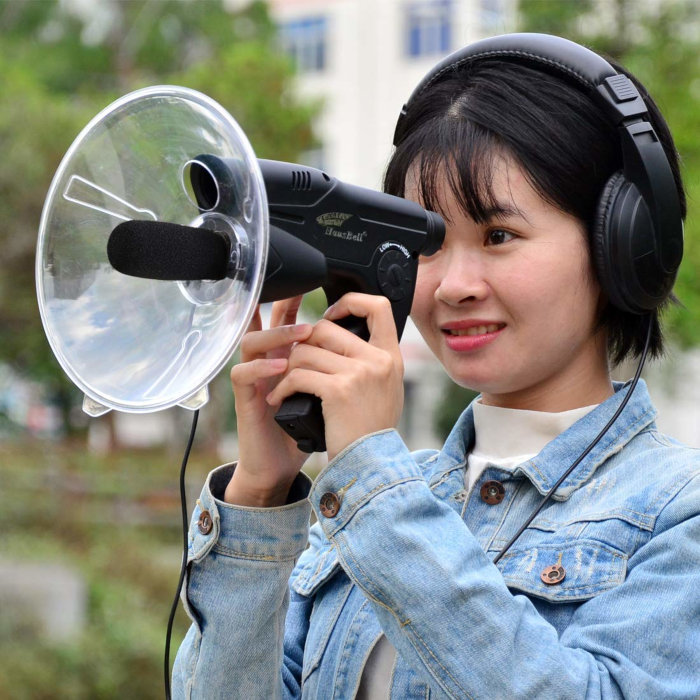
Parabolic microphone - the cost of pleasure is only $ 30-40
In principle, a laser microphone can be compared to a directional microphone - it also needs a straight "line of hearing" to the object, which can be quite long. But a laser microphone, on the other hand, allows you to overhear what is being said in a closed room. An invisible laser beam reads the vibrations of the window panes (and, according to some anecdotal data, it can read them from a glass on the table) and restores sound from them.
But do not rush to strain: laser microphones are really expensive, tens of thousands of dollars, and need a very professional operator. And if the secret services decide to get to you, they already have enough tools.
But if you are very attracted to expensive toys, pay attention to a thing called a nonlinear junction detector. It emits high-frequency radio waves, which, upon encountering any semiconductor electronics on their way, return reflected in a special, harmonized way. This allows you to detect even electronics that are not connected to a power source, including flash drives and SIM cards. But, firstly, because of such a high sensitivity, the device is prone to false alarms, and secondly, the price of such devices is measured in thousands of dollars.
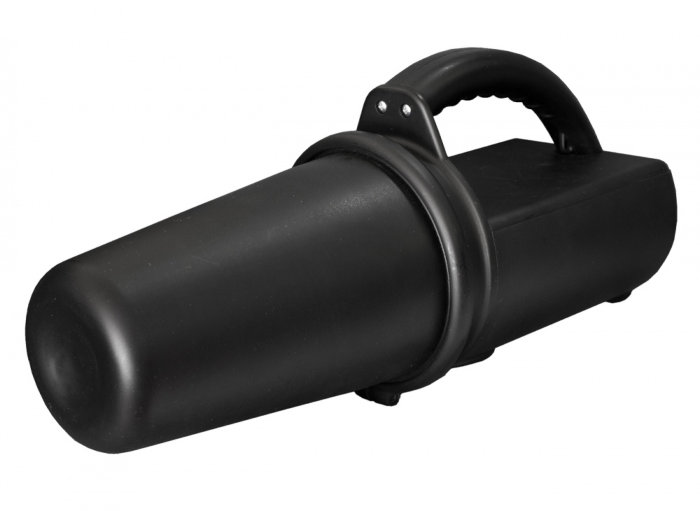
Economy class non-linear security screening locator - only 260 thousand rubles, and it's yours.
Finally, if you think you might have missed something and think that your worries are well grounded, then use jamming. You can jam the sound recording using expensive ultrasonic white noise generators, or you can just whisper in a place where there are enough additional sound sources (however, there are again expensive sound recording devices, the manufacturers of which extol their noise reduction capabilities).
There are also enough "jammers" for wireless networks and GPS trackers on the market - and the latter come with an additional function of imitation of immobility. This can, for example, be used by drivers who are monitored by their employers to get off the route in the guise of a parking lot.
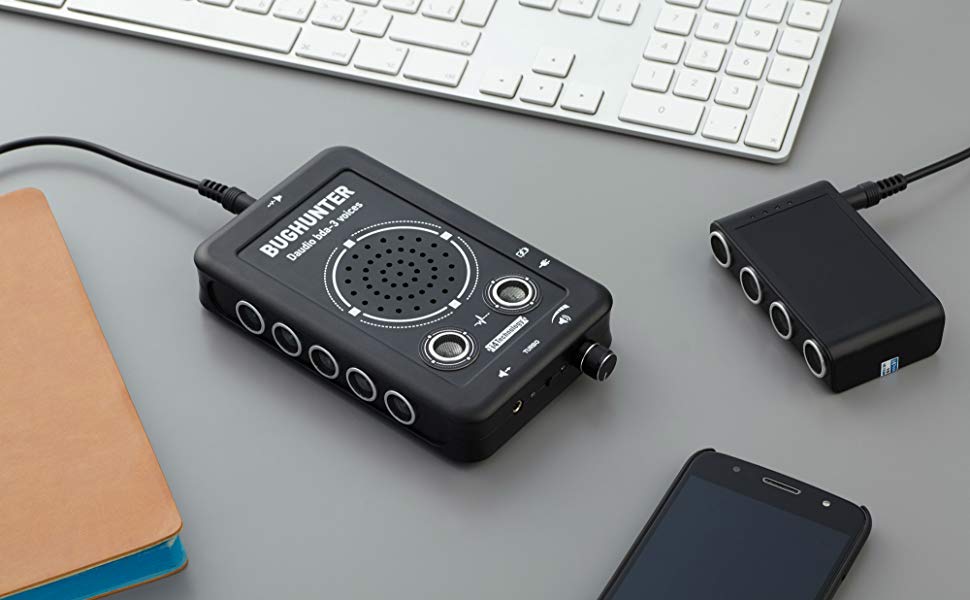
Advanced Ultrasonic Noise Generator for Recording Muting, $ 900 at Amazon.
But the video camera cannot be drowned out in the dark - although the infrared illumination does not turn night into day, it still allows you to see in the dark. But it is by its light that hidden cameras become even easier to detect.
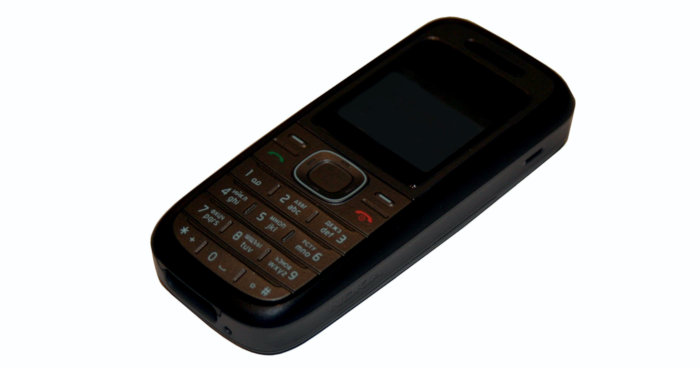
Portable mobile phone jammer in an ironic form factor - as they say, for important negotiations.
However, there are enough firms on the market that provide inspection services of this kind. If such dangers worry you seriously, contact them and sign a permanent contract. Regular checks are an additional plus to the security system.
Conclusions
Let's summarize. Covert surveillance devices are a very real security threat, but rather a niche one. It makes sense to use such devices only where they can bring a real catch - and in the modern world, real treasures are much more often found on servers, and not in safes.
The issues of protection against bugs are closely linked with everyday information security practices in physical reality - those that urge you not to write passwords on pieces of paper, not to insert questionable flash drives, and not to leave laptops and smartphones unattended.
If you seriously suspect that such methods can be used against you, then you have a good chance of detecting an amateur opponent. But, as with any other methods of attack and defense, there is always the opportunity to raise the stakes and apply significantly more expensive and complex methods. The only question is how justified it is. If you think it's justified, look for professionals with their tools.
And the most important advice: if you find a hidden camera in a rented apartment on Airbnb, do not forget to inform the administration of the service as soon as possible - there is a chance not only to get your money back, but instead of an uncomfortable apartment with bugs to spend a vacation in an expensive hotel.
So first of all, figure out who, why and how can act against you. Perhaps, in some attack scenarios, the use of gadgets will indeed be practical. For example, if someone wants to keep track of your movements, then they have different ways at their disposal - to hire private detectives or to get access to the data of providers and cellular operators. But using a GPS tracker can be cheaper, easier, and more convenient.
Choice problems
If suddenly, after reading this article, you wanted to feel like a super spy, then regardless of whether you have bad intentions, or you just want to have fun, we really do not recommend it. In the Russian Federation, there are laws that prohibit the sale and purchase of devices designed to secretly collect information. The wording in the law is vague, and the practice of law enforcement includes such dubious stories that the Supreme Court even issued a special clarification on how to prevent abuse of the law.
After that, determine in which zone the information security violation will be really critical in order to focus on protecting it and not waste too much effort and resources. It is impossible and unnecessary to protect everything from everything; instead, it is worth protecting what is really important. A boardroom meeting room or an area where a mission-critical project is being worked on, for example. Or just a closet where you keep something that shouldn't be seen by people who don't like you.
Don't forget that one of the most important hacker tools is social engineering. So you need to defend yourself against it. If you have already decided on your "protected perimeter", then make sure that the people admitted to it are also competent and interested in maintaining security. Remember that no one pays attention to cleaners and repairmen - it is easier for them to easily install a hidden device. But an absolutely loyal, but careless colleague may simply not notice that someone has put a spy gadget in his bag or pocket.
From theory to practice
Such an introduction before discussing technical issues was necessary, because there is no trick against some scrap, except for foresight.
A modern bug-microphone can be smaller than a flash drive, and if it simply records information while it is in someone's pocket, then it can only be detected with a highly sensitive detector at close range. It can look whatever you want. So you need to protect yourself from it, first of all, by non-technical methods.
Remember that any spy device has strengths and weaknesses. So, the microphone, for all its undetectability, has two very important weaknesses. First, the battery: no matter how good it is, even if the device is activated only when there is sound, and the rest of the time is in sleep mode - sooner or later it will run out.
And here the second weakness will appear: if the device does not have a transmitter, then it will not only have to be placed, but also taken away. And if they manage to find it before that, then all efforts to introduce a bug are in vain, no information will be obtained.

This is how the microphone of a more or less serious bug may look like, and its more modest friend from Aliexpress, most likely, will just look like a USB flash drive.
The situation is similar with video cameras. They, too, can be very compact and well camouflaged - down to a camera in a water bottle. But they have more weaknesses than microphones - battery life is shorter and a lens is always present. It can be very small, but it will still be at least a little, but glare if light hits it.
There are special detector devices that detect suspicious glare, but you can try to look for the camera using a regular flashlight. The less the rest of the light, the better - the glare will be more noticeable.
INFO:
Speaking about special devices-detectors, let us mention the important problem of the market for devices for secretly obtaining information and exposing them. When you become interested in them, you find yourself between two fires: Aliexpress, with its offerings of super cheap and super innovative gadgets, and specialty stores offering devices from manufacturers with decades of experience. Increased sensitivity and generally off scale coolness are usually advertised. But no one guarantees that a device a hundred times more expensive will be a hundred times better.

Pinhole camera lens from Aliexpress. Establishing its main part is not an elementary task.
Spotting bugs is a little easier if the operator wants to make his life easier too. Modern technologies have made devices that transmit data in real time quite affordable. But the laws of physics cannot be circumvented: if they transmit something, then you can detect or jam the transmission channel.
The most common transmission channel is the radio band, that is, Wi-Fi or cellular networks. Either the bug uses an already available Wi-Fi (for example, a guest network), or somewhere nearby an access point will be organized for it - pay attention to unfamiliar and powerful signal distribution nearby. If a new Wi-Fi network is suddenly added to your three usual neighbors, it is possible that the villains settled there.
However, with a high probability, the device will transmit data over cellular networks - and here it will be helped by radio signal detectors. But you need to use them wisely. Namely, turn off all devices that use wireless networks so that there are fewer extraneous signals and a greater chance of detecting a hidden spy. Then do a methodical search. It is somewhat naive to expect that you just press the button and the gadget will immediately reveal to you everything hidden.
How to choose a detector
From the powerful range of prices and the abundance of advertising when choosing a detector, eyes can start to run up. Try to carefully watch what you take, and pay attention first of all to the technical characteristics.

Hackers Tools.
For example, this detector costs $ 90 and promises a frequency range from 1 to 6500 MHz, has a remote antenna and a laser for flashing cameras. For an amateur device, these are good indicators and an acceptable price.
The method of working with the detector does not fundamentally differ from the method of simple inspection. Pay attention to suspicious signs: scratches, strange holes, mysterious objects. Try to put yourself in the shoes of an intruder and check the places where you yourself would hide something. Often, bugs are placed in lighting items or sockets - there, in addition, an uninterrupted power supply to the device can be organized. Of course, if you see any incomprehensible wires - check where they lead.
And it goes without saying - don't let just anyone poke anything into the USB ports of systems that are dear to you. This advice is slightly beyond the scope of this article, because once you get access to USB, you can no longer be limited to surveillance at this level.
Exotic and esoteric
Well, the basic principles are clear - but in case your interest (and paranoia) only flared up from them, here are a couple of interesting devices.
First, there are directional microphones. Strictly speaking, these are not bugs, but they can give a similar effect. A directional microphone can be just acoustic, with a parabolic resonator - such a technologically advanced "ear" is available to anyone, for example, to enjoy the singing of birds without disturbing their approach. Of course, walls protect from it - but if you decide to discuss business plans with colleagues in nature, it is better to remember this device.

Parabolic microphone - the cost of pleasure is only $ 30-40
In principle, a laser microphone can be compared to a directional microphone - it also needs a straight "line of hearing" to the object, which can be quite long. But a laser microphone, on the other hand, allows you to overhear what is being said in a closed room. An invisible laser beam reads the vibrations of the window panes (and, according to some anecdotal data, it can read them from a glass on the table) and restores sound from them.
But do not rush to strain: laser microphones are really expensive, tens of thousands of dollars, and need a very professional operator. And if the secret services decide to get to you, they already have enough tools.
But if you are very attracted to expensive toys, pay attention to a thing called a nonlinear junction detector. It emits high-frequency radio waves, which, upon encountering any semiconductor electronics on their way, return reflected in a special, harmonized way. This allows you to detect even electronics that are not connected to a power source, including flash drives and SIM cards. But, firstly, because of such a high sensitivity, the device is prone to false alarms, and secondly, the price of such devices is measured in thousands of dollars.

Economy class non-linear security screening locator - only 260 thousand rubles, and it's yours.
Finally, if you think you might have missed something and think that your worries are well grounded, then use jamming. You can jam the sound recording using expensive ultrasonic white noise generators, or you can just whisper in a place where there are enough additional sound sources (however, there are again expensive sound recording devices, the manufacturers of which extol their noise reduction capabilities).
There are also enough "jammers" for wireless networks and GPS trackers on the market - and the latter come with an additional function of imitation of immobility. This can, for example, be used by drivers who are monitored by their employers to get off the route in the guise of a parking lot.

Advanced Ultrasonic Noise Generator for Recording Muting, $ 900 at Amazon.
But the video camera cannot be drowned out in the dark - although the infrared illumination does not turn night into day, it still allows you to see in the dark. But it is by its light that hidden cameras become even easier to detect.

Portable mobile phone jammer in an ironic form factor - as they say, for important negotiations.
However, there are enough firms on the market that provide inspection services of this kind. If such dangers worry you seriously, contact them and sign a permanent contract. Regular checks are an additional plus to the security system.
Conclusions
Let's summarize. Covert surveillance devices are a very real security threat, but rather a niche one. It makes sense to use such devices only where they can bring a real catch - and in the modern world, real treasures are much more often found on servers, and not in safes.
The issues of protection against bugs are closely linked with everyday information security practices in physical reality - those that urge you not to write passwords on pieces of paper, not to insert questionable flash drives, and not to leave laptops and smartphones unattended.
If you seriously suspect that such methods can be used against you, then you have a good chance of detecting an amateur opponent. But, as with any other methods of attack and defense, there is always the opportunity to raise the stakes and apply significantly more expensive and complex methods. The only question is how justified it is. If you think it's justified, look for professionals with their tools.
And the most important advice: if you find a hidden camera in a rented apartment on Airbnb, do not forget to inform the administration of the service as soon as possible - there is a chance not only to get your money back, but instead of an uncomfortable apartment with bugs to spend a vacation in an expensive hotel.
